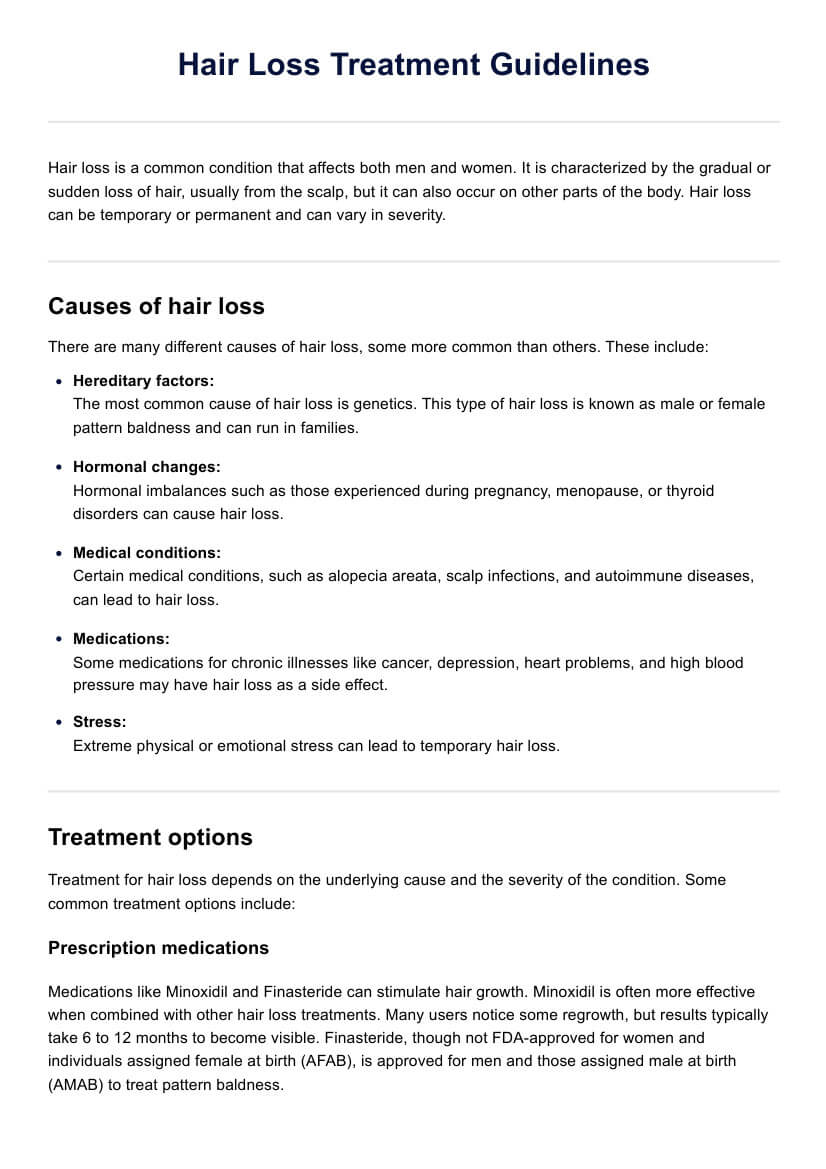The best treatment for hair loss depends on the underlying cause. Options include medications like minoxidil and finasteride, low level laser therapy, and hair transplant surgery.

Hair Loss Treatment Guidelines
Discover effective hair loss treatment guidelines and examples in Carepatron's free downloadable PDF. Learn about proven strategies and solutions for addressing hair loss.
Use Template
Hair Loss Treatment Guidelines Template
Commonly asked questions
Yes, depending on the cause. Treatments like medications, laser therapy, and lifestyle changes can promote hair regrowth and reverse some types of hair loss.
Excessive hair shedding can be due to factors like stress, hormonal changes, nutritional deficiencies, or medical conditions like thyroid disorders.
EHR and practice management software
Get started for free
*No credit card required
Free
$0/usd
Unlimited clients
Telehealth
1GB of storage
Client portal text
Automated billing and online payments











